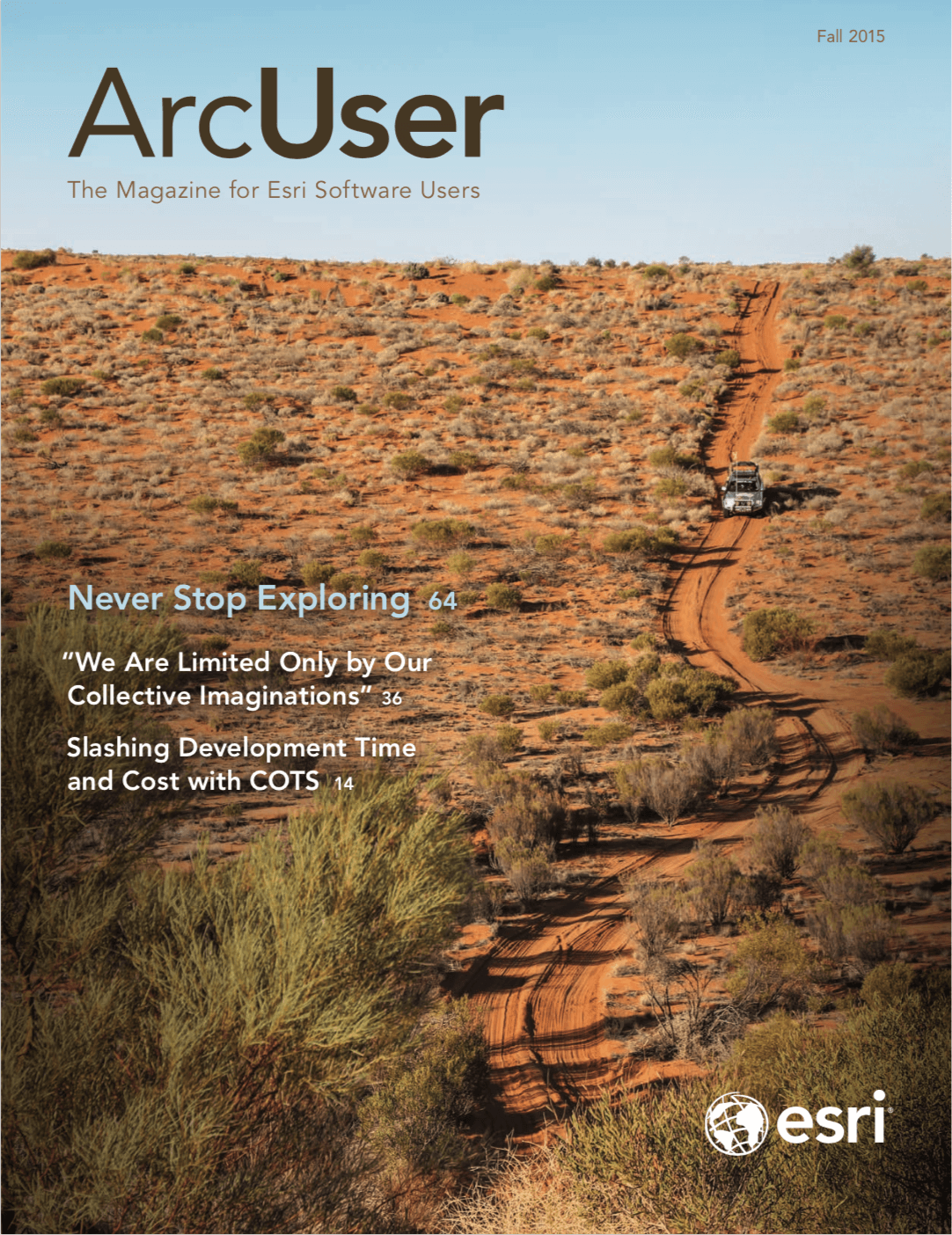
When I first started working at Esri nearly a decade ago, my meetings with clients were almost exclusively with GIS managers and GIS technicians. Today, my meetings with many of these same clients are more likely to be with CIOs, agency and department directors, and other executives. That’s not because I’m more important than I was a decade ago; it’s because GIS is more important than it was a decade ago. And I think two big shifts in the GIS industry have resulted in this change.
First, GIS really started to gain traction in government agencies and the private sector in the 1990s and early 2000s. Organizations wanted it but didn’t always put a lot of thought into where it best fit within the organization as a whole. Often, it would fall under whatever department seemed the most able or willing to house it.
Over time, IT professionals saw the value of GIS in terms of how it could benefit the organization, whether it meant geoenabling an existing business system, providing spatial insight to other departments, or as a way to share data with the public. That’s when the game changed. GIS evolved from essentially a niche technology to a mission-critical business system. As a result, we’ve seen IT departments increasingly embrace what was previously seen as an outlier technology.
Second, commercial mapping and mobile devices over the last decade have become pervasive. People expect to be able to get to a map easily now—anytime and anywhere. They don’t feel they should have a gatekeeper controlling access to this information. This evolution has increased dramatically over the last several years with the widespread adoption of web GIS and the availability of focused GIS apps.
As a result of these two big shifts, the role of the GIS professional has forever changed—and for the better! The traditional days of sitting in a corner cubicle and printing out paper maps in a reactive mode are long gone.
Colleagues expect more.
The public expects more.
And executives demand more.
Therefore, being able to engage with executives is a crucial factor in the future of a GIS professional’s success.
So how can GIS managers do this? Engaging with executives takes some prep work. Three changes in your approach pave the way for better interactions with executives.
Understand Their Pain and Vision
Before you schedule a meeting, you need to understand two key things about the executives: you need to know their pain and their vision. They have something that’s frustrating them—something that’s keeping them up at night and that’s putting pressure on them. They probably also have a vision—a specific goal—that they want to achieve.
So what exactly are their pain points and vision? Don’t be afraid to ask. I ask executives this question all the time, and you’d be surprised how willingly they’ll share this information.
Change Your Terminology
The way you engage executives is not the same way you’d engage your GIS colleagues. The conversation has to be different because it’s highly unlikely that executives have the same detailed knowledge of GIS that you possess. In addition, they’re generally focused more on the big picture…because they have to be! That’s what effective executives do.
Your conversation with the executive should focus on three things: organizational workflows, mapping, and analysis. Typically, I try to avoid all mention of GIS jargon and vendor-specific terminology when meeting with executives. I’ve even had very productive conversations where we never even mentioned the term GIS. Focus on how mapping and analysis can be integrated into workflows—not just to make a map but to optimize workflows; make better decisions; and enable collaboration, communication, and transparency.
For example, focus on how GIS can be integrated into your organization’s business systems. Are you using location analytics to get the most out of your permitting system or asset management system? Are there other business intelligence systems that have a location component that could be mapped and analyzed?
Create Solutions
The most effective way you can become a trusted adviser for an executive is to take the information given to you and map out a solution. I would even submit that this could be the most important role a GIS professional plays in an organization.
To do this, first identify the problem statement, the cause, and the negative impact it creates. The next step is to produce the solution by stating how you plan to solve the problem and what the positive outcome can be. Keep this solution map short and sweet and at a high level. And again, avoid technical terms and jargon. Executives don’t care about geodatabase designs, models, or widgets, nor should they. That’s what they pay you to do.
This next part is critical: You need to be able to assure the executive that the solution you’re implementing is sustainable. Your director isn’t just looking at the cost of implementing the solution but also at the cost of maintaining it over many years. Are you offering a solution that is completely customized and constantly relying on either in-house or third-party development? What happens if/when you or the in-house developer leaves? Also, will the solution be able to work on multiple devices?
Embrace Your New Role
Gone are the days when the GIS professional could fly under the radar and work independently of the organization’s essential workflows and goals. But have no fear. There is a very important role for you to play in this new work environment. And to be honest, this evolution of your role is actually a process toward making you indispensable. This is your chance to make executives see both you and GIS for what they really are: mission-critical elements to the success of the organization.

